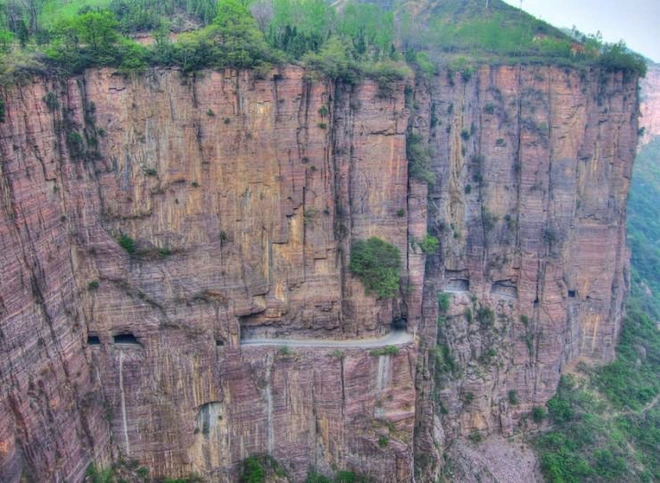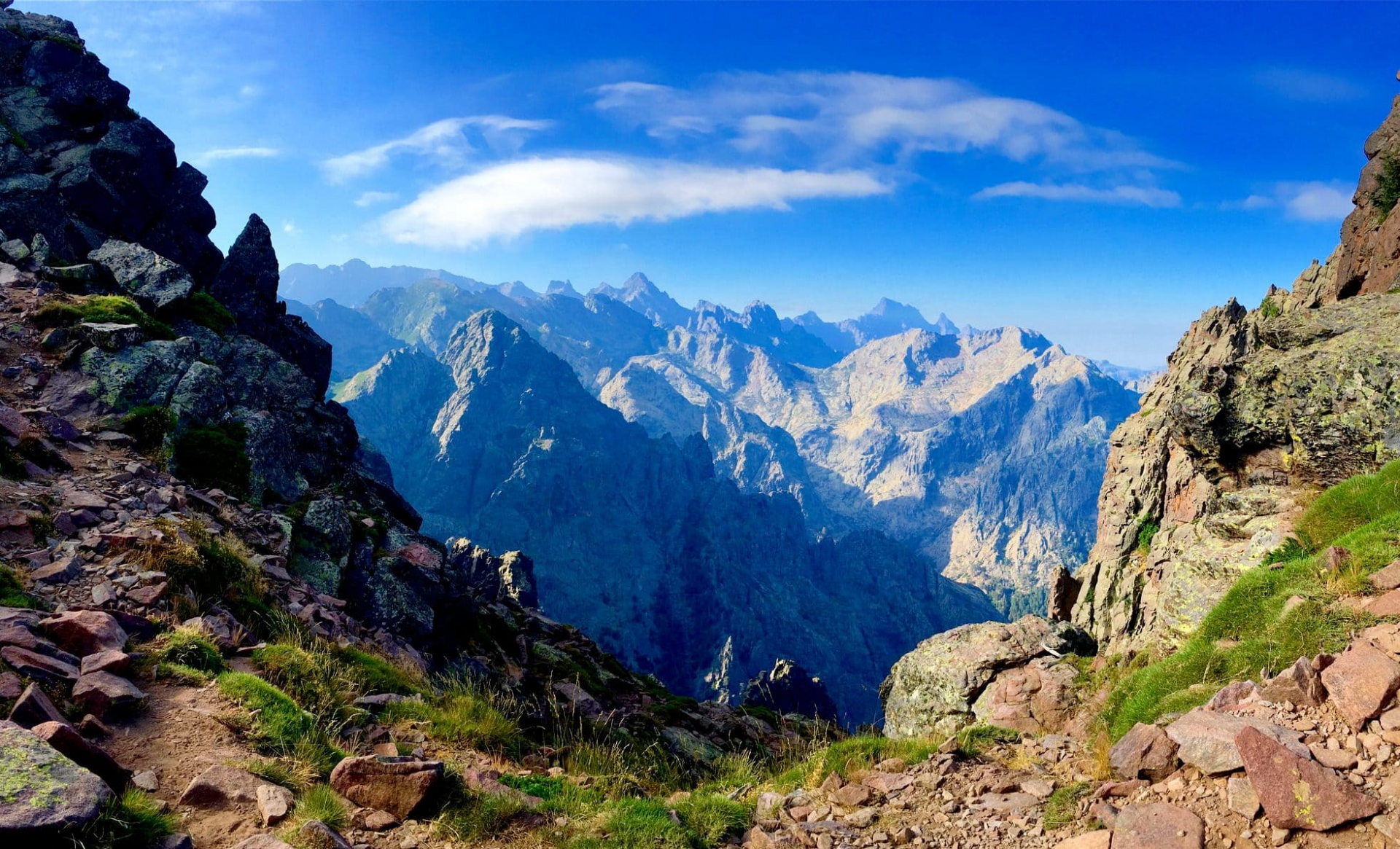Top 10 Oldest Inhabited Cities In The World
| Living On Cliffs: The Thrilling Dangers of A Chinese Village | |
| Top 10 Best Treks In The World For Adventurous Travellers To Discover | |
| Amazing Salt Island Floating In The Heart of Dead Sea |
Cities come and go. This has been a true fact for as long as cities have existed. Most of the ancient cities that belong to the earliest cities in human history are long gone. At most they’re now ruins and/or archaeological sites and sometimes their whereabouts are completely unknown. However, there are some old cities left that are thousands of years old and who are still very much in existence. These cities, which were founded several of thousands of years ago, are still inhabited. People still live in those up to this day. Want to know where you can experience as much ancient history as nowhere else without having to visit an uneventful archaeological site? The following ranking lists the oldest 10 cities in the world that are still inhabited today.
1. Jericho
Jericho, Arabic Arīḥā, town located in the West Bank. Jericho is one of the earliest continuous settlements in the world, dating perhaps from about 9000 BCE. Archaeological excavations have demonstrated Jericho’s lengthy history. The city’s site is of great archaeological importance; it provides evidence of the first development of permanent settlements and thus of the first steps toward civilization.
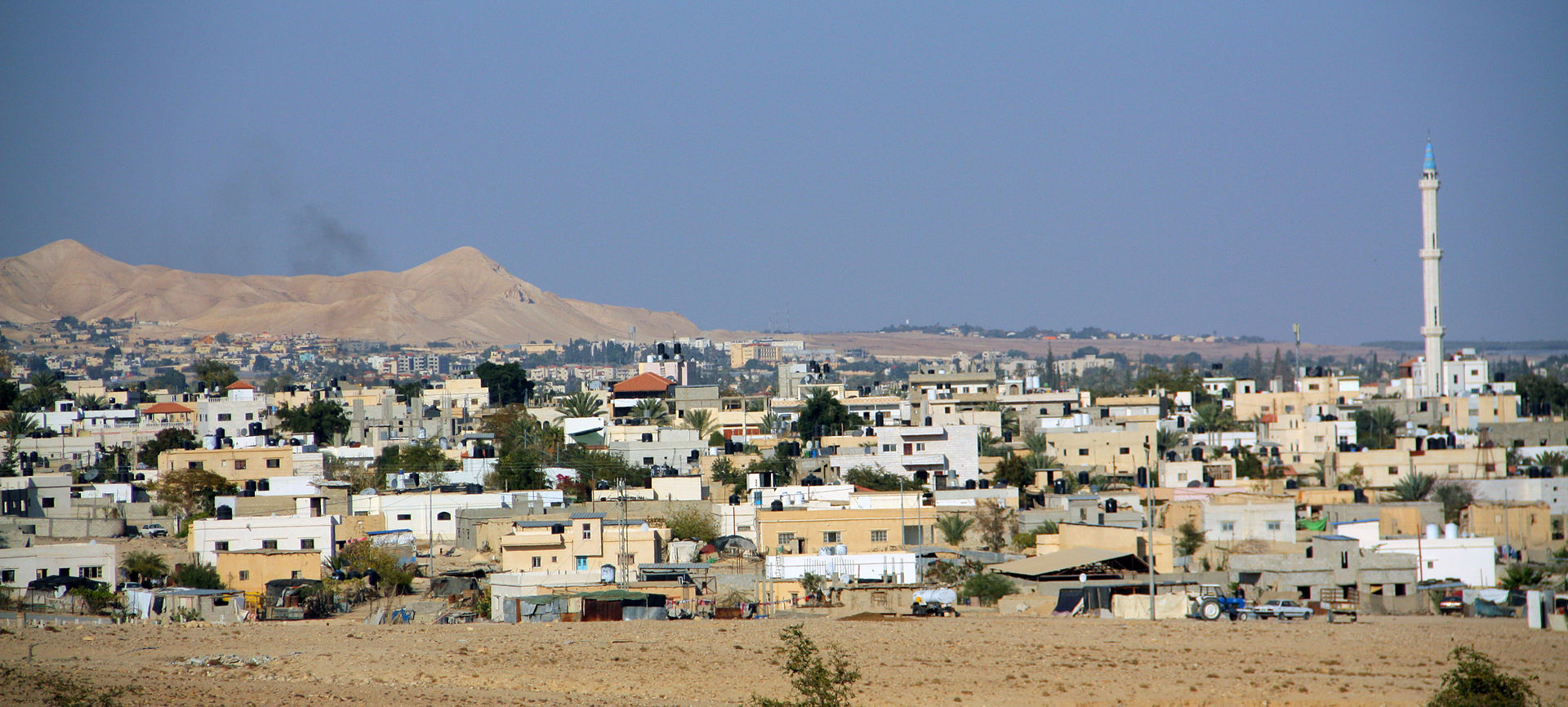 |
| Photo: Getty |
Traces have been found of visits of Mesolithic hunters, carbon-dated to about 9000 BCE, and of a long period of settlement by their descendants. By about 8000 BCE the inhabitants had grown into an organized community capable of building a massive stone wall around the settlement, strengthened at one point at least by a massive stone tower. The size of this settlement justifies the use of the term town and suggests a population of some 2,000–3,000 persons. Thus, this 1,000 years had seen movement from a hunting way of life to full settlement. The development of agriculture can be inferred from this, and grains of cultivated types of wheat and barley have been found. Jericho is thus one of the places providing evidence of very early agriculture. It is highly probable that, to provide enough land for cultivation, irrigation had been invented. This first Neolithic culture of Palestine was a purely indigenous development.
2. Byblos
Byblos, modern Jbail, also spelled Jubayl, or Jebeil, biblical Gebal, ancient seaport, the site of which is located on the coast of the Mediterranean Sea, about 20 miles (30 km) north of the modern city of Beirut, Lebanon. It is one of the oldest continuously inhabited towns in the world. The name Byblos is Greek; papyrus received its early Greek name (byblos, byblinos) from its being exported to the Aegean through Byblos. Hence the English word Bible is derived from byblos as “the (papyrus) book.”
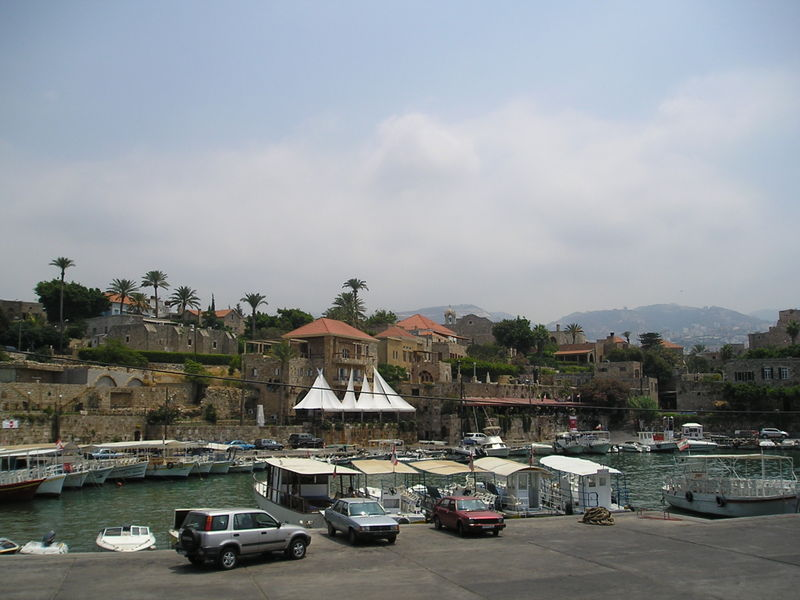 |
| Photo: Getty |
Modern archaeological excavations have revealed that Byblos was occupied at least by the Neolithic Period (New Stone Age; c. 8000–c. 4000 BC) and that during the 4th millennium BC an extensive settlement developed there. Because Byblos was the chief harbour for the export of cedar and other valuable wood to Egypt, it soon became a great trading centre; it was called Kubna in ancient Egyptian and Gubla in Akkadian, the language of Assyria. Egyptian monuments and inscriptions found on the site attest to close relations with the Nile River valley throughout the second half of the 2nd millennium. During Egypt’s 12th dynasty (1938–1756 BC), Byblos again became an Egyptian dependency, and the chief goddess of the city, Baalat (“The Mistress”), with her well-known temple at Byblos, was worshiped in Egypt. After the collapse of the Egyptian New Kingdom in the 11th century BC, Byblos became the foremost city of Phoenicia.
The ancient ruins of Byblos were rediscovered by the French historian Ernest Renan, who led a survey of the area. Systematic excavations were begun there by Pierre Montet in 1921; in the mid-1920s Maurice Dunand resumed the work and continued it until the mid-1970s. The ruins today consist of the Crusader fortifications and gate; a Roman colonnade and small theatre; Phoenician ramparts, three major temples, and a necropolis; and remains of Neolithic dwellings. Byblos was designated a UNESCO World Heritage site in 1984.
3. Damascus
Damascus, Arabic Dimashq, city, capital of Syria. Located in the southwestern corner of the country, it has been called the “pearl of the East,” praised for its beauty and lushness; the 10th-century traveler and geographer al-Maqdisī lauded the city as ranking among the four earthly paradises.
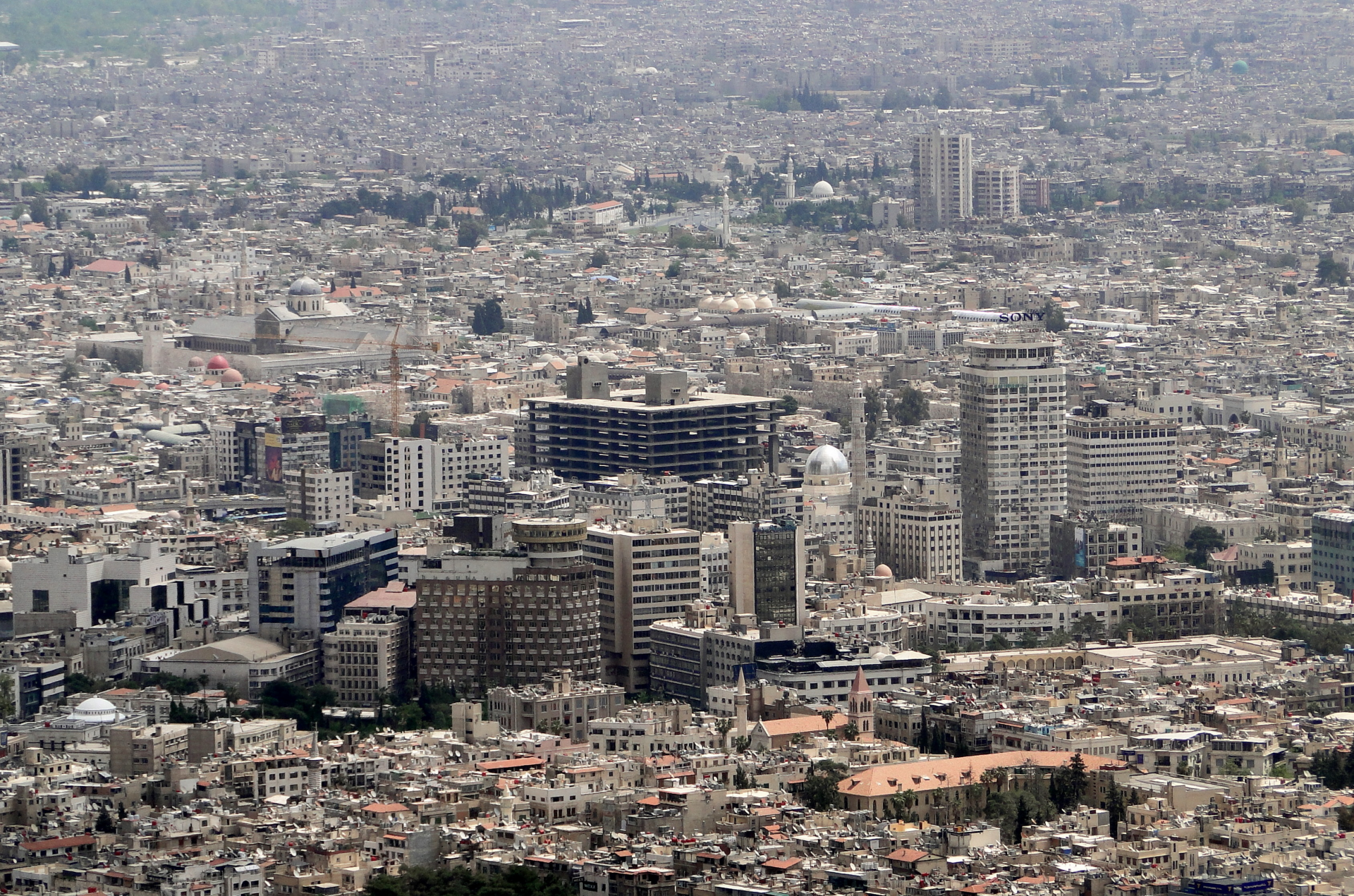 |
| A typical modern-day neighborhood in Damascus, Credit: Bernard Gagnon / CC BY-SA 3.0 |
Over the centuries, Damascus has been conqueror and conquered, wealthy and destitute, and capital of empire and small states. Its fame has been sustained by its continuous prominence as a commercial and intellectual centre. Its life has been nourished periodically by immigrants from the hinterland and from the Mediterranean Basin and Southwest Asia. Often a focus of contention by powers of East and West, Damascus’s fortunes have frequently been linked to those of distant capitals, most notably Ashur, Antioch, Rome, Baghdad, Cairo, and Istanbul. Now a burgeoning metropolis of the Middle East, it retains, as it has through centuries of triumph and disaster, an indomitable spirit and a considerable charm.
Since 1946, Damascus is now serving as the capital of the country of Syria. There are now around 1.7 million people living in the city.
4. Ray
Shahr-e Rey is the capital of Ray County in Tehran Province, Iran. Formerly a distinct city, it has now been absorbed into the metropolitan area of Greater Tehran as the 20th district of municipal Tehran, the capital city of the country.
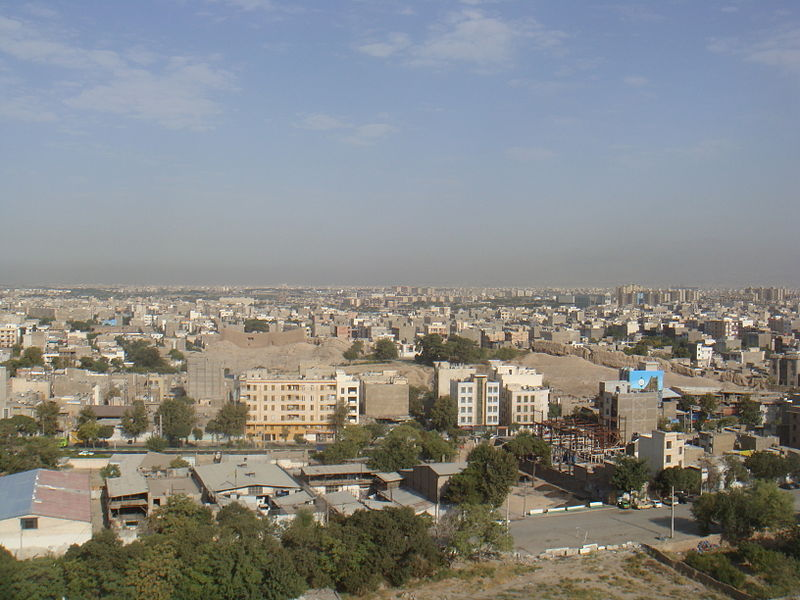 |
| Modern-day Ray, Credit: Orijentolog / CC BY-SA 3.0 |
Historically known as Rhages (/ˈreɪdʒiːz/), Rhagae and Arsacia, Ray is the oldest existing city in Tehran Province. In the classical era, it was a prominent city belonging to Media, the political and cultural base of the Medes. Ancient Persian inscriptions and the Avesta (Zoroastrian scriptures), among other sources, attest to the importance of ancient Ray. Ray is mentioned several times in the Apocrypha. It is also shown on the 4th-century Peutinger Map. The city was subject to severe destruction during the medieval invasions by the Arabs, Turks, and Mongols. Its position as a capital city was revived during the reigns of the Buyid Daylamites and the Seljuk Turks. Ray is richer than many other ancient cities in the number of its historical monuments. The Neolithic site of Cheshme-Ali, the reconstructed Median-era Rey Castle, the Parthian-era Rashkan Castle, the Sasanian-era Zoroastrian Fire Temple of Bahram, and the once Zoroastrian and now Islamic Shrine of Bibi Shahrbanu are among the many archaeological sites in Ray.
5. Argos
 |
| Ancient theater of Argos, Credit: Ploync / CC BY 3.0 |
Founded in: ~ 5,000 B.C. (~ 7,000 years old)
Today part of: Peloponnese Region, Greece
Today’s population: 22,000
Argos is the fifth oldest still inhabited city in the world. At the same time, the city is also the oldest still inhabited city in all of Europe. Argos can track its origins back to around 5,000 BC. The city’s population fluctuated quite a lot over time and with it its importance. Argos reached its absolute height point of importance in 808 BC, however, when it served as the founding city of the Argead dynasty (also known as the “House of Argos“). The most prominent member of the Argeadians, Alexander the Great, would later become known as the world’s greatest military commander having created one of the greatest empires in human history. Argos is not quite as important today, but it is indeed still inhabited after all these over 7,000 of years. About 22,000 people call the city in the Greek Peloponnese Region their home today.
6. Aleppo
Aleppo, Arabic Ḥalab, Turkish Halep, principal city of northern Syria. It is situated in the northwestern part of the country, about 30 miles (50 km) south of the Turkish border. Aleppo is located at the crossroads of great commercial routes and lies some 60 miles (100 km) from both the Mediterranean Sea (west) and the Euphrates River (east). Pop. (2004) 2,132,100.
 |
| Downtown area of Aleppo in 2016, Credit: imago / Xinhua |
The exact age of Aleppo is unknown, although it is thought to be among the world’s oldest continuously inhabited cities. The first settlers are believed to have built homes on the hill at the centre of the modern city, taking advantage of the area’s natural defensive advantages, fertile agricultural land, and proximity to a water source, the Quwayq River. However, the continuous occupation of the site to the present day has made the search for archaeological evidence of the site’s earliest history difficult.
The city’s Arabic name, Ḥalab, is of ancient Semitic origin. It is first mentioned in the archives of the ancient city of Ebla at the end of the 3rd millennium BCE as the site of an important temple dedicated to the Near Eastern storm god Hadad. In the late 20th century archaeologists discovered the buried remains of this temple at the site of Aleppo’s medieval citadel, atop the hill at the city’s centre. The oldest parts of the temple date to the 3rd millennium BCE, and the building was renovated several times over the succeeding millennia. The thickness of its ruined walls indicates that the temple was a tall tower that would have been visible for long distances.
7. Erbil
Erbil is the capital of the autonomous Kurdistan region of Iraq. With the population of approximately 1.3 million in 2009, it is the fourth largest city in Iraq after Baghdad, Basra and Mosul.
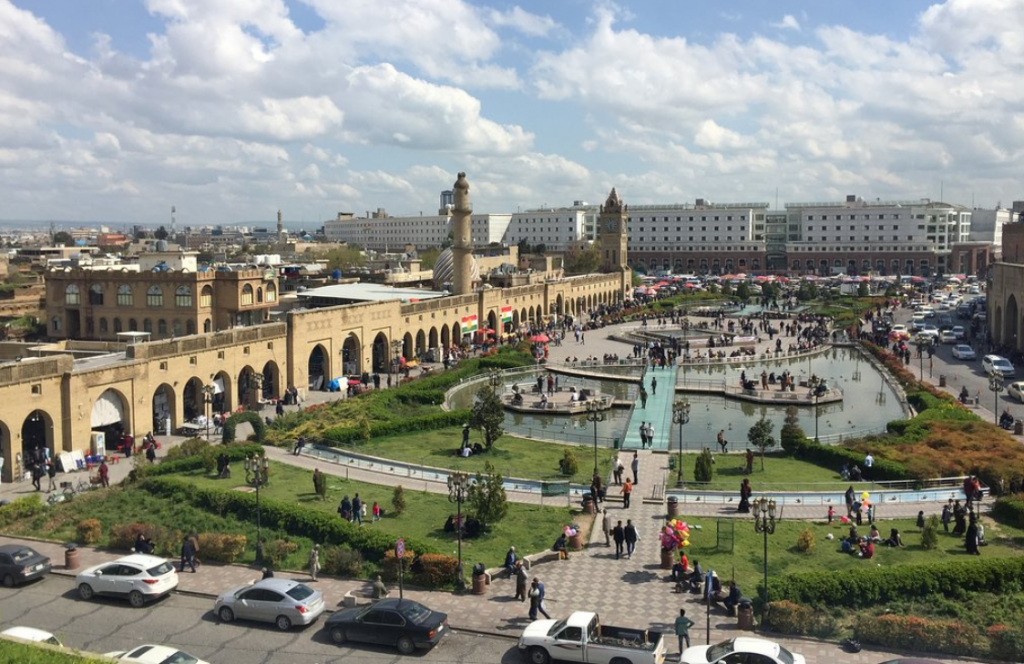 |
| Downtown Erbil, Source: Tripadvisor |
Urban life in Erbil can be dated back to at least 6000 BC and it is one of the oldest continuously inhabited cities in the world. At the heart of the city is the ancient Citadel of Erbil, which is estimated to be close to 7000 years old. At the entrance is a large statue of Mubarak Ben Ahmad Sharaf-Aldin (1169-1239) known as Ibn Almustawfi. He wrote on the subject of history, literature and language. His self proclaimed masterpiece is a set of four volumes on the history of Erbil.
Inside the citadel, you will find beautiful traditional rugs and textiles at the Kurdish Textile Museum also showcase and perseveres textile techniques by traditional tribes and endangered nomads of Kurdistan. The citadel also offers great views over the city.
Erbil is also home to many parks. The largest and most central is the Sami Abdul Rahman Park. Stretching over many hectares, it is the ideal place to enjoy greenery, peace and quiet without having to leave the city.
8. Gaziantep
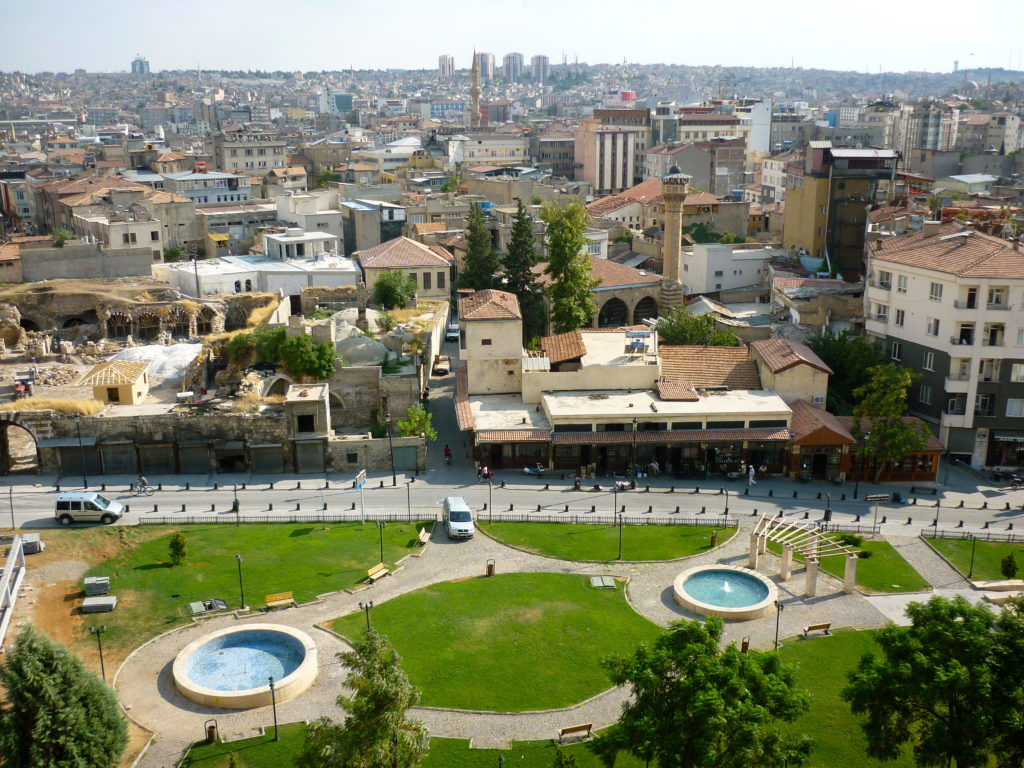 |
| View over Gaziantep, Credit: Christopher Phillips |
Gaziantep, previously and still informally called Aintab or Antep (pronounced [anˈtep]), is the capital of Gaziantep Province, in the westernmost part of Turkey's Southeastern Anatolia Region, approximately 185 kilometres (115 mi) east of Adana and 97 kilometres (60 mi) north of Aleppo, Syria. It is probably located on the site of ancient Antiochia ad Taurum, and is near ancient Zeugma.
The city has three urban districts under its administration, Oğuzeli, Şahinbey, and Şehitkamil. It is the sixth-most populous city in Turkey.
9. Luxor
Luxor, Arabic Al-Uqṣur, also called El-Aksur, city and capital of Al-Uqṣur muḥāfaẓah (governorate), Upper Egypt. Luxor has given its name to the southern half of the ruins of the ancient Egyptian city of Thebes. Area governorate, 1,080 square miles (2,800 square km); city, 160 square miles (415 square km). Pop. (2017) governorate, 1,250,209; (2018 est.) city, 127,994.
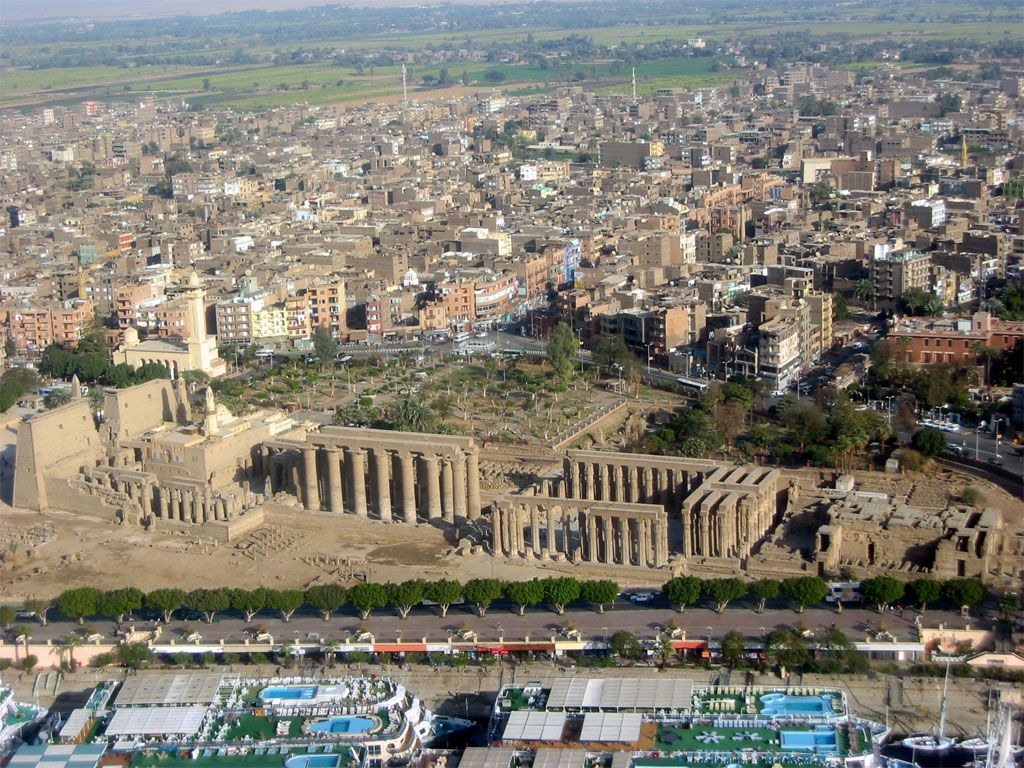 |
| Ruins of ancient Luxor, surrounded by the modern-day city, Source: Pinterest |
The southern part of Thebes grew up around a beautiful temple dedicated to Amon, king of the gods, his consort Mut, and their son Khons. Commissioned by King Amenhotep III (Amenophis III; reigned 1390–53 BCE) of the late 18th dynasty, the temple was built close to the Nile River and parallel with the bank and is known today as the Temple of Luxor. An avenue of sphinxes connected it to the Great Temple of Amon at Karnak. The modern name Luxor (Arabic: Al-Uqṣur) means “The Palaces” or perhaps “The Forts,” from the Roman castra.
Luxor, together with other Theban sites—Karnak, the Valley of the Queens, and the Valley of the Kings—was designated a UNESCO World Heritage site in 1979. Excavations and preservation efforts have been ongoing. In 1988 the Egyptian Antiquities Organization uncovered numerous 18th-dynasty statues at the court of Amenhotep III, and work to excavate and preserve the court continued through the following decades. In the 21st century a project began to excavate the avenue of sphinxes between the Temple of Luxor and the Great Temple of Amon at Karnak.
10. Beirut
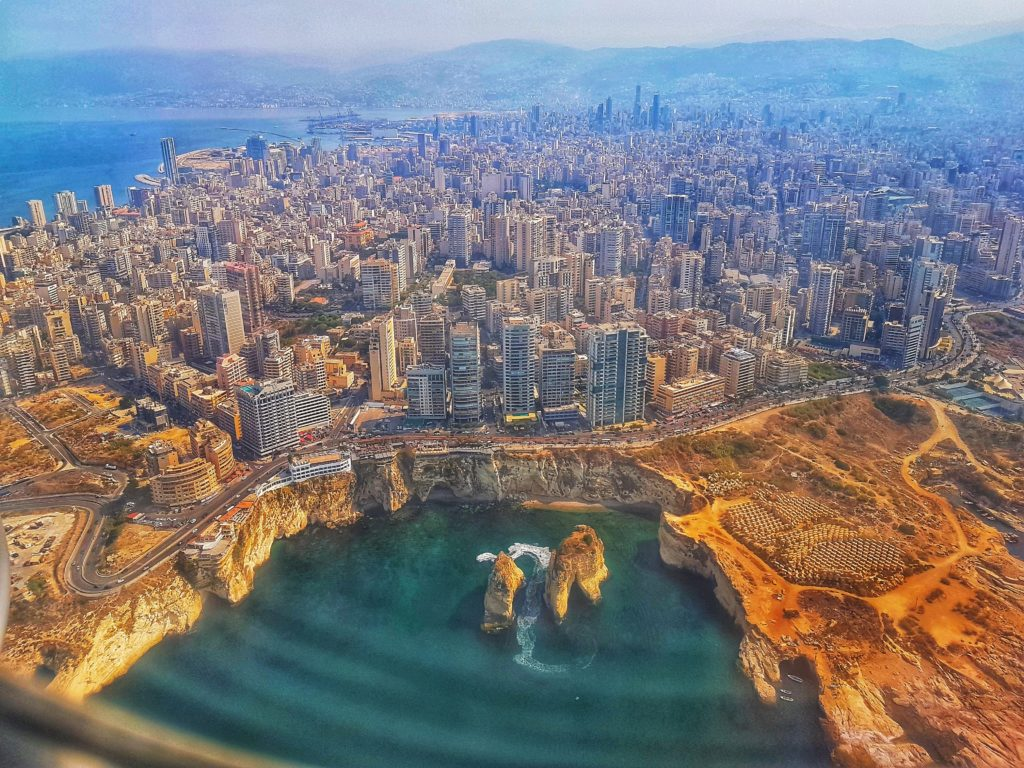 |
| View of modern-day Beirut and the Beirut metropolitan area, Source: Pexels |
Beirut, Arabic Bayrūt, French Beyrouth, capital, chief port, and largest city of Lebanon. It is located on the Mediterranean coast at the foot of the Lebanon Mountains.
Beirut is a city of baffling contradictions whose character blends the sophisticated and cosmopolitan with the provincial and parochial. Before 1975 Beirut was widely considered the most thoroughly Westernized city in the Arab Middle East; after that, however, 15 years of civil war ravaged most parts of the city and eroded much of the lustre that had formerly concealed the Arab—as distinct from the Levantine—side of its character. Despite the sectarian and ideological passions unleashed by the civil war, Beirut retains its basically liberal and tolerant way of life, albeit in changed circumstances. In the 1990s Beirut began extensive rebuilding efforts to restore its economic base and cultural landmarks. Area governorate, 7 square miles (18 square km); city, 26 square miles (67 square km). Pop. (2003 est.) city, 1,171,00; (2005 est.) urban agglom., 1,777,000.
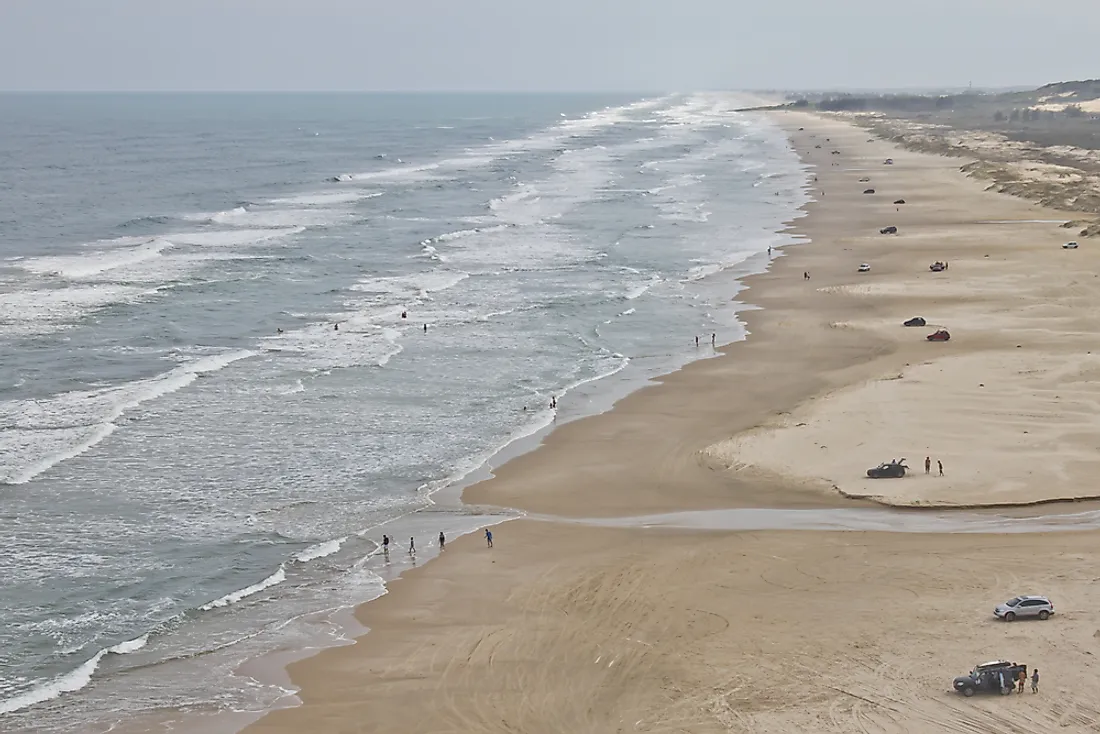 | Top 10 Longest Beaches in the World Summer is the season of holidays, beaches and relaxation. Here is the list of top 10 longest beaches in the world for you to add ... |
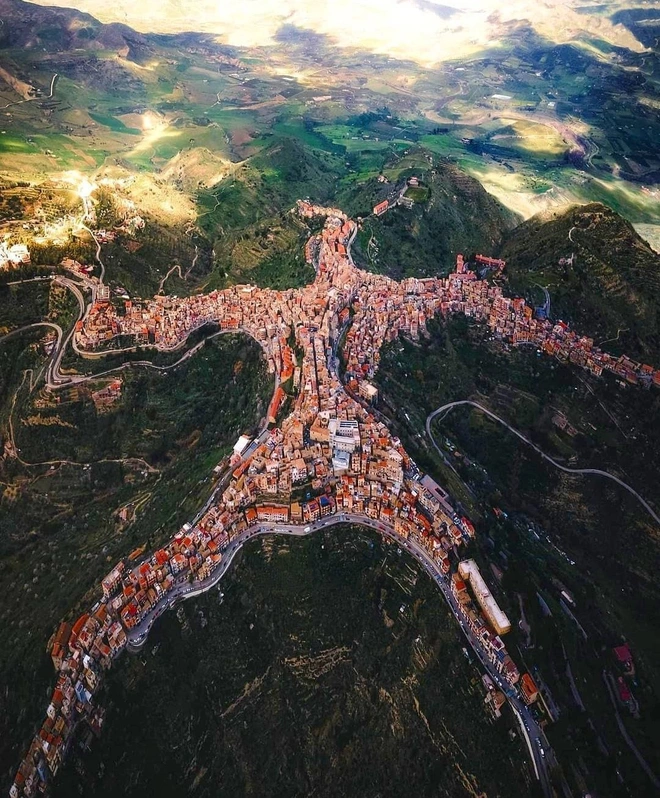 | Centuripe: The Sicily Village That Has The Weirdest Shape In The World There is a small village nestled in Sicily, Italy, which has the weirdest shape that both looks like a human chilling out and a starfish ... |
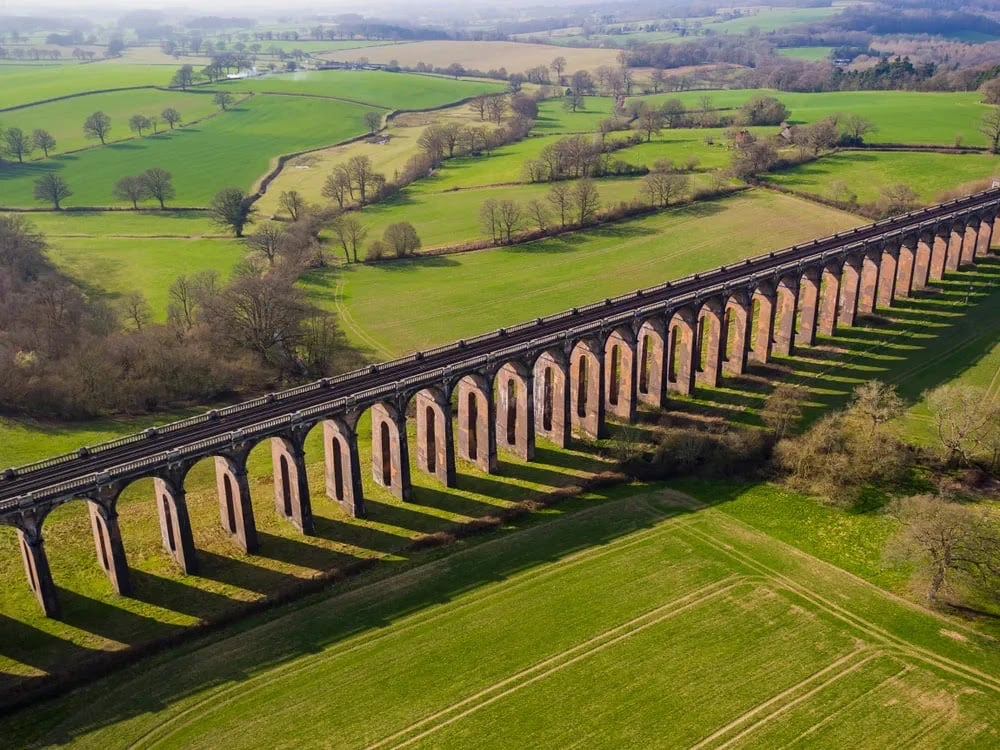 | Ouse Valley Viaduct: The Aesthetically Beautiful Spot Nestled in The Serene West Sussex Hills Located not far from the village of Cuckfield, the magnificent marvel of the Victorian Railway Age sits almost serenely in the beautiful hills of the ... |
Recommended
 World
World
Pakistan NCRC report explores emerging child rights issues
 World
World
"India has right to defend herself against terror," says German Foreign Minister, endorses Op Sindoor
 World
World
‘We stand with India’: Japan, UAE back New Delhi over its global outreach against terror
 World
World
'Action Was Entirely Justifiable': Former US NSA John Bolton Backs India's Right After Pahalgam Attack
 World
World
US, China Conclude Trade Talks with Positive Outcome
 World
World
Nifty, Sensex jumped more than 2% in opening as India-Pakistan tensions ease
 World
World
Easing of US-China Tariffs: Markets React Positively, Experts Remain Cautious
 World
World

